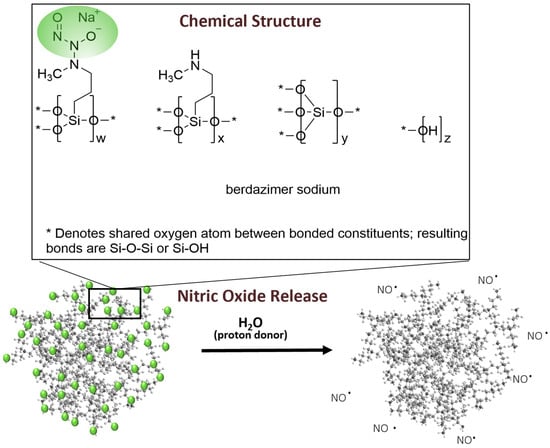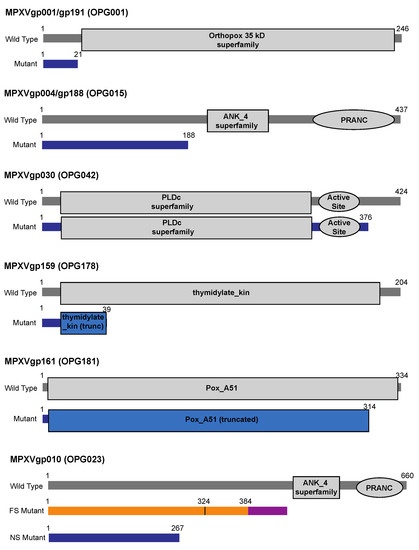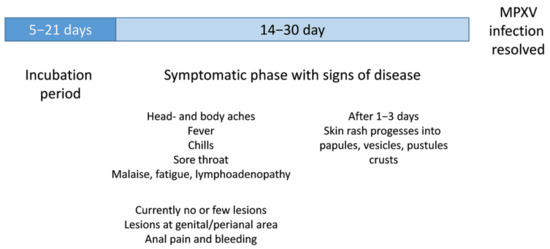Poxviruses
Share This Topical Collection
Editors
 Dr. Giliane de Souza Trindade
Dr. Giliane de Souza Trindade
 Dr. Giliane de Souza Trindade
Dr. Giliane de Souza Trindade
E-Mail
Website
Collection Editor
1. Laboratório de Vírus, Departamento de Microbiologia, Instituto de Ciências Biológicas, Universidade Federal de Minas Gerais, Belo Horizonte, Minas Gerais, Brazil
2. Virus Laboratory, Microbiology Department, Universidade Federal de Minas Gerais, Belo Horizonte, Minas Gerais, Brazil
Interests: emerging viruses; viruses ecoepidemiology; poxvirus; vaccinia virus; vaccinia virus natural circulation; zoonotic virus; arboviruses
Special Issues, Collections and Topics in MDPI journals
 Dr. Galileu Barbosa Costa
Dr. Galileu Barbosa Costa
 Dr. Galileu Barbosa Costa
Dr. Galileu Barbosa Costa
E-Mail
Website
Collection Editor
Laboratory of Emerging Pathogens, Division of Emerging and Transfusion Transmitted Diseases, Office of Blood Review and Research, Centers for Biologics Evaluation and Research, U.S. Food and Drug Administration, Silver Spring, MD, USA
Interests: Orthopoxviruses; vaccinia virus; monkeypox virus; cowpox virus; emerging viruses; emerging diseases; diagnostics; epidemiology; surveillance; public health
 Prof. Dr. Flavio Guimaraes da Fonseca
Prof. Dr. Flavio Guimaraes da Fonseca
 Prof. Dr. Flavio Guimaraes da Fonseca
Prof. Dr. Flavio Guimaraes da Fonseca
E-Mail
Website
Collection Editor
Vaccine Development Center, Universidade Federal de Minas Gerais (UFMG), Belo Horizonte 31270-901, Brazil
Interests: viral vaccines; viral diagnostics; nanomaterials applied to viral biotechnologies
Special Issues, Collections and Topics in MDPI journals
Topical Collection Information
Dear Colleagues,
In 1980, after the world's largest mass vaccination campaign, smallpox was declared eradicated. Caused by a poxvirus called variola virus, smallpox was one of the most widespread diseases humanity had ever seen. Historically, poxviruses have always been in the public health or science spotlight. In virology, poxviruses were critical for the development of different methodologies for growth in cell culture, purification, titration and characterization. More recently, these viruses have emerged as technological tools with different applications, such as the production of vaccines or cancer therapy. Moreover, on several continents, we have seen an escalation of zoonotic poxvirus cases with consequences for public health, as well as the description of new poxviruses infecting humans or domestic or wild animals. For this Topical Collection, we are inviting the scientific community to submit research articles, reviews, opinion articles or short communications from fields of research related to poxviruses.
Dr. Giliane de Souza Trindade
Dr. Galileu Barbosa Costa
Prof. Dr. Flavio Guimaraes da Fonseca
Collection Editors
Manuscript Submission Information
Manuscripts should be submitted online at www.mdpi.com by registering and logging in to this website. Once you are registered, click here to go to the submission form. Manuscripts can be submitted until the deadline. All submissions that pass pre-check are peer-reviewed. Accepted papers will be published continuously in the journal (as soon as accepted) and will be listed together on the collection website. Research articles, review articles as well as short communications are invited. For planned papers, a title and short abstract (about 100 words) can be sent to the Editorial Office for announcement on this website.
Submitted manuscripts should not have been published previously, nor be under consideration for publication elsewhere (except conference proceedings papers). All manuscripts are thoroughly refereed through a single-blind peer-review process. A guide for authors and other relevant information for submission of manuscripts is available on the Instructions for Authors page. Viruses is an international peer-reviewed open access monthly journal published by MDPI.
Please visit the Instructions for Authors page before submitting a manuscript.
The Article Processing Charge (APC) for publication in this open access journal is 2600 CHF (Swiss Francs).
Submitted papers should be well formatted and use good English. Authors may use MDPI's
English editing service prior to publication or during author revisions.
Keywords
- poxvirus
- Chordopoxvirinae
- Entomopoxvirinae
- zoonotic poxviruses
- orthopoxviruses
- emerging poxviruses
- bioterrorism
- vaccine
- virus pathogenesis
- therapeutics
- diagnostics
- evolution
- ecology
- biotechnology
- virus-host cell interaction and signaling
- oncolytic poxviruses
- viral genomics and proteomics
- viral Immunity
Published Papers (4 papers)
Open AccessArticle
The Antiviral Effect of Berdazimer Sodium on Molluscum Contagiosum Virus Using a Novel In Vitro Methodology
by
Brian M. Ward, Daniel A. Riccio, Martina Cartwright and Tomoko Maeda-Chubachi
Cited by 3 | Viewed by 1799
Abstract
Molluscum contagiosum (MC) is characterized by skin lesions containing the highly contagious molluscum contagiosum poxvirus (MCV). MCV primarily infects children, with one US Food and Drug Administration (FDA)-approved drug-device treatment in use but no approved medications. Assessing antivirals is hindered by the inability
[...] Read more.
Molluscum contagiosum (MC) is characterized by skin lesions containing the highly contagious molluscum contagiosum poxvirus (MCV). MCV primarily infects children, with one US Food and Drug Administration (FDA)-approved drug-device treatment in use but no approved medications. Assessing antivirals is hindered by the inability of MCV to replicate in vitro. Here, we use vaccinia virus as a surrogate to provide evidence of the anti-poxvirus properties of berdazimer sodium, a new chemical entity, and the active substance in berdazimer gel, 10.3%, a nitric oxide-releasing topical in phase 3 development for the treatment of MC. We show that berdazimer sodium reduced poxvirus replication and, through a novel methodology, demonstrate that cells infected with drug-treated MCV virions have reduced early gene expression. Specifically, this is accomplished by studying the nuclear factor kappa-light-chain-enhancer of activated B cell (NF-kB)-blocking protein MC160 as an example of an early gene. The results provide a plausible unique antiviral mechanism of action supporting increased MCV resolution observed in patients treated with berdazimer gel, 10.3% and describe a novel methodology that overcomes limitations in investigating MCV response in vitro to a potential new MC topical medication.
Full article
►▼
Show Figures
Open AccessCommunication
Orthopoxvirus Circulation in an Endemic Area in Brazil: Investigation of Infections in Small Mammals during an Absence of Outbreaks
by
Iago J. S. Domingos, Kamila L. S. Rocha, Jessica M. Graciano, Lara R. Almeida, Jeffrey B. Doty, Adriano P. Paglia, Danilo B. Oliveira, Yoshinori J. Nakazawa and Giliane de S. Trindade
Viewed by 1337
Abstract
Vaccinia virus (VACV) is the causative agent of an emerging viral zoonosis called bovine vaccinia (BV). Several studies have documented characteristics of VACV infections in Brazil; however, the manner in which this virus is maintained in wildlife remains unknown. This work investigated the
[...] Read more.
Vaccinia virus (VACV) is the causative agent of an emerging viral zoonosis called bovine vaccinia (BV). Several studies have documented characteristics of VACV infections in Brazil; however, the manner in which this virus is maintained in wildlife remains unknown. This work investigated the presence of viral DNA and anti-orthopoxvirus (OPXV) antibodies in samples collected from small mammals in a VACV-endemic area in Minas Gerais, Brazil, in the absence of current outbreaks. Samples did not show amplification of OPXV DNA in molecular tests. However, 5/142 serum samples demonstrated the presence of anti-OPXV neutralizing antibodies in serological tests. These data reinforce the involvement of small mammals in the natural cycle of VACV, highlighting the need for further ecological studies to better understand how this virus is maintained in nature and to develop measures to prevent BV outbreaks.
Full article
►▼
Show Figures
Open AccessArticle
ORF-Interrupting Mutations in Monkeypox Virus Genomes from Washington and Ohio, 2022
by
Jaydee Sereewit, Nicole A. P. Lieberman, Hong Xie, Shah A. K. Mohamed Bakhash, B. Ethan Nunley, Benjamin Chung, Margaret G. Mills, Pavitra Roychoudhury and Alexander L. Greninger
Cited by 13 | Viewed by 3572
Abstract
Monkeypox virus, the causative agent of the 2022 monkeypox outbreak, is a double-stranded DNA virus in the
Orthopoxvirus genus of the
Poxviridae family. Genes in terminal regions of
Orthopoxvirus genomes mostly code for host-pathogen interaction proteins and are prone to selective pressure and
[...] Read more.
Monkeypox virus, the causative agent of the 2022 monkeypox outbreak, is a double-stranded DNA virus in the
Orthopoxvirus genus of the
Poxviridae family. Genes in terminal regions of
Orthopoxvirus genomes mostly code for host-pathogen interaction proteins and are prone to selective pressure and modification events. Using viral whole genome sequencing, we identified twenty-five total clinical samples with ORF-disrupting mutations, including twenty samples encoding nonsense mutations in MPXVgp001/191 (OPG001), MPXVgp004/188 (OPG015), MPXVgp010 (OPG023), MPXVgp030 (OPG042), MPXVgp159 (OPG0178), or MPXVgp161 (OPG181). Additional mutations include a frameshift leading to an alternative C-terminus in MPXVgp010 (OPG023) and an insertion in an adenine homopolymer at the beginning of the annotated ORF for MPXVgp153 (OPG151), encoding a subunit of the RNA polymerase, suggesting the virus may instead use the start codon that encodes Met9 as annotated. Finally, we detected three samples with large (>900 bp) deletions. These included a 913 bp deletion that truncates the C-terminus of MPXVgp010 (OPG023); a 4205 bp deletion that eliminates MPXVgp012 (OPG025), MPXVgp013 (OPG027), and MPXVgp014 (OPG029) and truncates MPXVgp011 (OPG024; D8L) and MPXVgp015 (OPG030); and a 6881 bp deletion that truncates MPXVgp182 (OPG210) and eliminates putative ORFs MPXVgp184, MPXVgp185 (OPG005), and MPXVgp186, as well as MPXVgp187 (OPG016), and MPXVgp188 (OPG015) from the 3’ ITR only. MPXVgp182 encodes the monkeypox-specific, highly immunogenic surface glycoprotein B21R which has been proposed as a serological target. Overall, we find greater than one-tenth of our sequenced MPXV isolates have at least one gene inactivating mutation and these genes together comprised greater than one-tenth of annotated MPXV genes. Our findings highlight non-essential genes in monkeypox virus that may be evolving as a result of selective pressure in humans, as well as the limitations of targeting them for therapeutics and diagnostic testing.
Full article
►▼
Show Figures
Open AccessReview
Monkeypox Goes North: Ongoing Worldwide Monkeypox Infections in Humans
by
Barbara S. Schnierle
Cited by 12 | Viewed by 2967
Abstract
In the late 1970s, global vaccination programs resulted in the eradication of smallpox. The Monkeypox virus (MPXV), which is closely related to the smallpox-inducing variola virus, was previously endemic only in Sub-Saharan Africa but is currently spreading worldwide. Only older people who have
[...] Read more.
In the late 1970s, global vaccination programs resulted in the eradication of smallpox. The Monkeypox virus (MPXV), which is closely related to the smallpox-inducing variola virus, was previously endemic only in Sub-Saharan Africa but is currently spreading worldwide. Only older people who have been vaccinated against smallpox are expected to be sufficiently protected against poxviruses. Here I will summarize current knowledge about the virus, the disease caused by MPXV infections, and strategies to limit its spread.
Full article
►▼
Show Figures












